Accessibility links
Low lying and layered with clay, the soils of Molescroft Farm in East Yorkshire have never been the easiest to cultivate. Driven by ever-dwindling productivity, the land was pushed to its limits for decades – more passes with machinery, more fertilisers, more pesticides. These intensive agricultural practices kept the farm afloat; but beneath the surface, the soil was dying.
"The land had been farmed very conventionally, so the ground was overworked and had lost its organic matter," recalls managing director Tamara Hall, who joined the estate in 2003. "We had to change, for environmental reasons as well as profitability."
And so, bit by bit, Molescroft was reworked with sustainability in mind. The farm's main crops – wheat, peas, beans and barley – had their rotation widened, drainage was improved and fewer chemicals were sprayed. Cultivation was also dialled down, with far less ploughing and tilling to keep soil disturbance at a minimum.
For the health of the land and its long-term yield potential, Hall believes her interventions have been resoundingly positive. But in the short-term, these regenerative practices were expensive as yields fell, carrying the risk of financial shortfall. The solution, Hall realised, was resting beneath her feet: soil carbon.
"We're planting a lot of [ground] cover plants like phacelia and black oats that capture carbon from air and trap it in the ground. Then, when we've built up enough, we'll sell that carbon as credits to companies trying to offset their emissions. It's called carbon farming."
After a couple of years and some meticulous measurements to show the changing carbon content of the soil, the sequestered carbon is certified and transferred into credits, before being sold
Farmlands cover half of the Earth's habitable land, and the global food system produces 21-37% of the world's greenhouse gas emissions from human activity. When fields are worked with heavy machinery, their soils – which store three times as much CO2 as the atmosphere – leach trapped carbon back into the air.
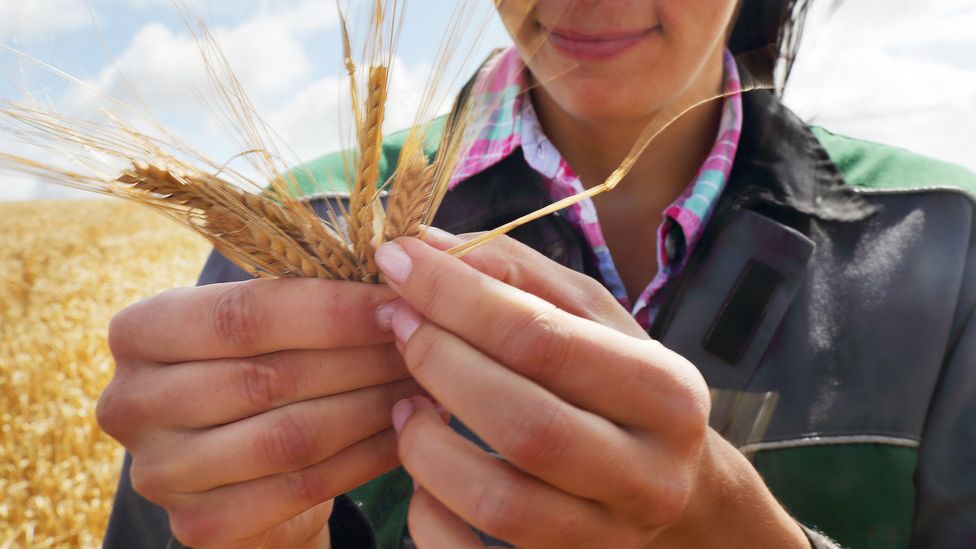
Food is not the only reason to grow crops – conventional farming methods can be replaced or augmented with carbon farming (Credit: Getty Images)
Carbon farming, on the other hand, seeks to capture emissions, not create them. The challenge has been to make this form of regenerative farming financially viable, paying landowners to rejuvenate degraded soils by turning their fields into vast CO2 sponges.
Achieving this requires a range of regenerative techniques. Cover cropping is particularly popular – fields blanketed with grasses, cereals, legumes and other plant life that pull carbon from the air during photosynthesis, then store it in the soil below. After a couple of years and some meticulous measurements to show the changing carbon content of the soil, the sequestered carbon is certified and transferred into credits, before being sold.
For its proponents, carbon farming promises a bold new agricultural business model – one that tackles climate change, creates jobs and saves farms that might otherwise be unprofitable.
Having spent decades on the fringes of the agriculture community, carbon farming is starting to catch on. The European Commission is promoting the practice as part of its new Farm to Fork Strategy, with the launch of an EU-wide carbon credit market expected later this year. Similar moves are underway in the United States, with the recent passage of a carbon-focused Growing Climate Solutions Act, and in the UK, where private projects are springing up at pace.
The Sustainable Futures Carbon Bank is one such enterprise. "The enthusiasm around carbon capture has really increased in the last couple of years," says Paul Rhodes, co-director of a Yorkshire-based sustainable agriculture consultancy. Keen to kindle this growing interest in green farming, Rhodes and business partner Steve Cann recently established their carbon bank: a scheme that helps British farmers harness, and ultimately profit from, CO2 sequestration.
Offering advice on soil restoration, crop diversification, cover plants and cultivation techniques, the pair will shortly be marketing an initial 10,000 tonnes of their members' certified soil-stored carbon.
We're on the frontline of climate change here – soon there will be whole transects of land that simply won't be able to be farmed like they used to – Lorraine Gordon
It's at this stage, the selling, that problems can arise. While some farmers have made tens of thousands of pounds (or even more) from their sequestered CO2, there are deep concerns around so-called phantom credits – carbon units of dubious provenance that may have no basis in reality.
It's an issue the Yorkshiremen take incredibly seriously. "It's vital to be statistically robust, so we won't sell any credits until satellite and on-farm soil benchmarking analysis has been completed, the crop rotation has been agreed with the farmer, and the certification process has been successfully navigated," explains Cann.
With this level of scientific rigour, the pair are confident that they can sell carbon credits in advance, using a modelling system to forecast future capture. Baked into the process are strict checks and balances, including remote sensors to monitor real-time carbon absorption, and a 40% buffer in case predictions come up short. (Read more about what makes a strong carbon market)
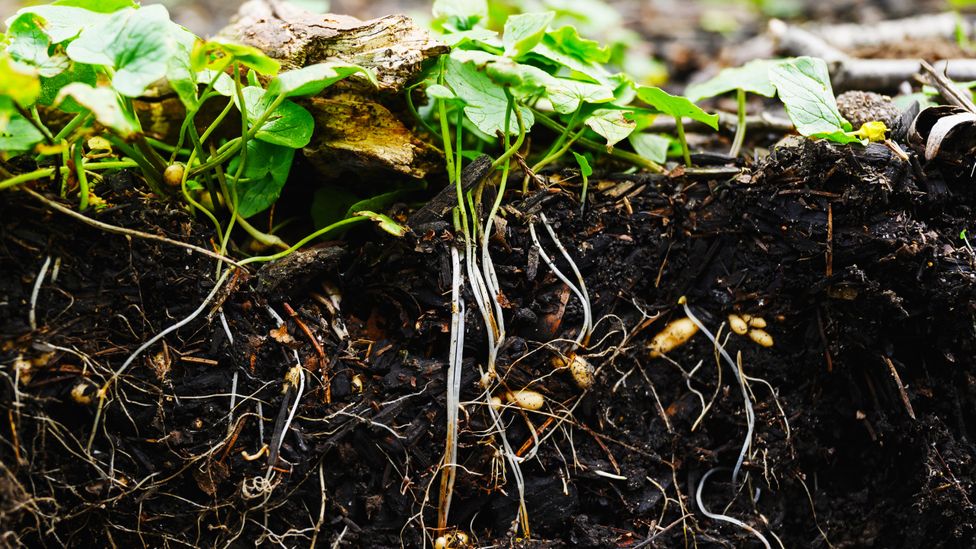
Carbon farming helps to store carbon in the soil, removing it from the atmosphere and enriching the land (Credit: Getty Images)
On the north coast of New South Wales in Eastern Australia, similar considerations are being made. For cattle grazier and agriculture academic Lorraine Gordon, carbon farming is as much an existential imperative as it is a financial venture.
"We're on the frontline of climate change here – soon there will be whole transects of land that simply won't be able to be farmed like they used to," says Gordon. "Just look at the fires we're having to deal with."
Determined to play her part in a climate solution, Gordon educates Australian landowners on the merits of regenerative agriculture and carbon farming. On her own property, Moffat Falls, mixed pastures teeming with biodiversity are woven with deep-rooted tap plants and legumes that slurp CO2 from the air at remarkable speed.
CARBON COST
From carbon markets to flight levies, economic interventions have the potential to drastically reduce the world's carbon emissions. Carbon Cost analyses some of the most powerful economic measures that could reshape the way we live, and our relationship with the planet and nature.
Cattle farming can be an extremely carbon-intensive form of agriculture, responsible for 65% of greenhouse gas emissions from livestock. But Gordon takes measures to minimise her herd's impact, keeping the cattle mobbed up and moving fast, only ever shaving off the top layer of grass to allow the land time to recover. This, she says, is crucial to sequestering carbon in the soil.
"Hooved animals are vital, because it's that hoof action that stirs up the grasses and seeds sitting dormant on the ground," says Gordon. "The cows are key to activating the whole carbon capture process and speeding up photosynthesis."
In time, Gordon intends to sell her sequestered carbon, either to the Australian government or a business. With that in mind, she's busy setting up monitoring systems to quantify how much CO2 Moffat Falls is absorbing. This process marks a permanent switch in her agricultural priorities – there's no time to be half-hearted, Gordon says, and reneging on regeneration isn't an option.
"There isn't any point trapping emissions in the soil if, a few years later, you're going to return to the same old intensive techniques, which will send a deluge of sequestered carbon right back into the atmosphere."
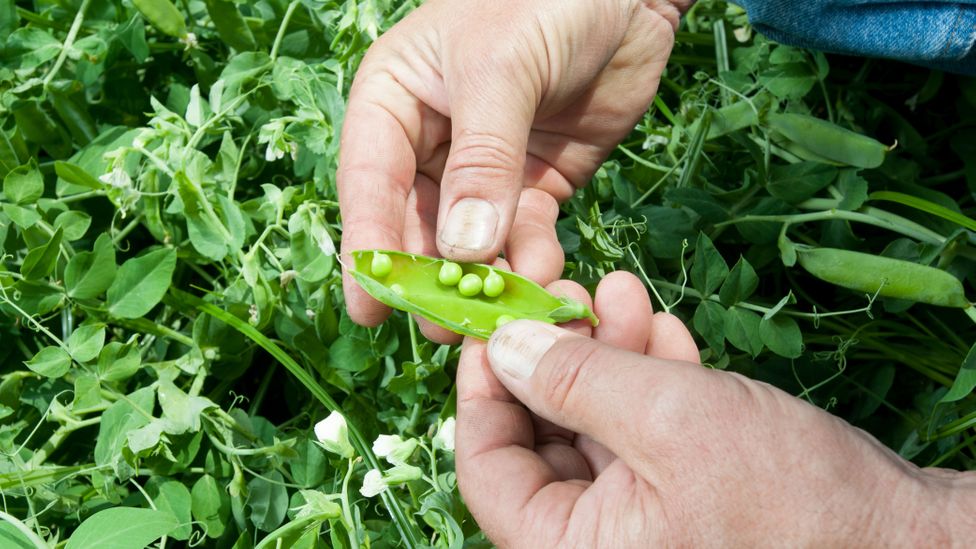
Certain crops, such as legumes, help to sequester greenhouse gases and store them in the soil (Credit: Getty Images)
Once a farmer has committed to carbon capture, they must find a platform to sell their credits. Carbon markets operate a bit like stock exchanges – prices go up and down with the shifting forces of supply and demand. As with any tradeable commodity, a level of cost fluctuation is to be expected; less tolerable, experts say, is the lack of clear, universal standards governing the carbon farming community.
"There's a lot of momentum behind carbon capture schemes, but there's no global protocol for measuring, reporting, and verifying credits," explains Francesca Cotrufo, a soil ecologist at Colorado State University. "Because of this, there isn't yet a level playing field for farmers, or a set of protocols for them all to follow."
This fragmentation is compounded by the inherent variability of soil chemistry. The carbon concentrations of two patches of ground only a few feet apart can differ dramatically, even if samples are taken at the same depth. This opens the door to misreadings and inconsistency, with the risk of farmers being paid for carbon they haven't actually sequestered.
The standardisation of reading and reporting techniques alone won't correct this – technology is also needed. Scientists are working to increase the throughput of soil carbon measurements with infrared spectroscopy, a technique that identifies soil components by analysing how they absorb or reflect infrared light. Coupled with AI-statistics and next generation ecosystem modelling, farmers should be able to calculate their soil's carbon sequestration potential with a higher level of accuracy.
These developments are in the works, Cotrufo says, and while she'd like to see them employed on every farm that trades carbon credits, that's an unrealistic prospect.
"Is it financially feasible to sample on every single farm? Most likely not, so we need to understand how we can stratify sampling in a way we can do measurements for verification at scale," she says.
"That way, carbon farming could have mass appeal."
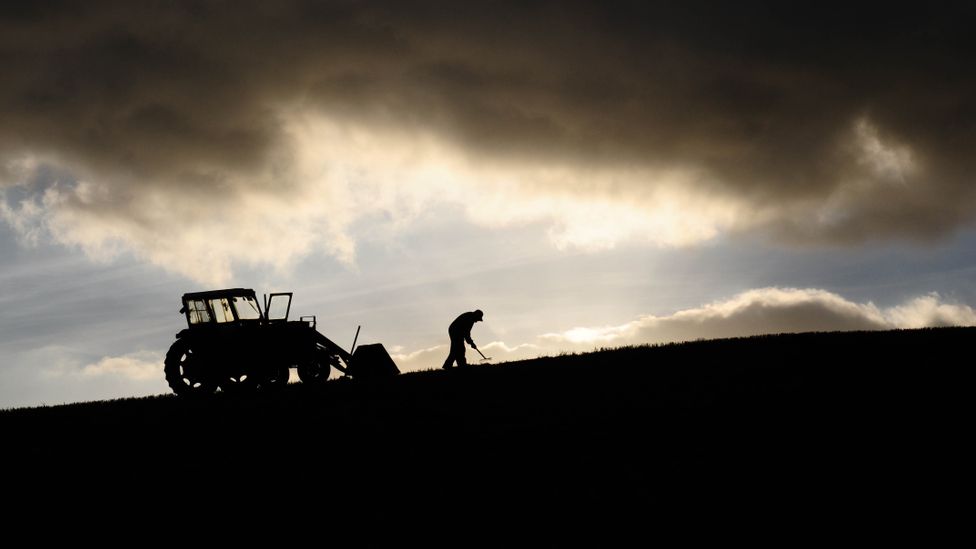
Carbon farming can help provide an alternative source of income to farmers whose land is degraded, while improving the quality of the soil at the same time (Credit: Getty Images)
Until universal standards are in place, some would-be carbon farmers are wary of taking their credits to market. In the meantime, there's still plenty of value to be had from CO2 capture.
"I'm hoping that, in the future, our beef, lamb and pork produce will be a byproduct of the carbon that we farm and sell," says Loren Poncia, a fourth-generation cattle rancher in northern California. "But even before that happens, the stuff we're sequestering is helping cut costs in the here and now."
A dryland ranch, Poncia's Stemple Creek requires a significant amount of rainfall to operate – a resource often in short supply in the Golden State. Increasing the carbon content of the soil lets the pastures store more water, promoting the growth of grasses and other cover crops, which keep the grazing herds fed and healthy. It is a win-win scenario for Poncia, who's hopeful of even greater profitability when his captured carbon is monetised.
Back in East Yorkshire, Tamara Hall is equally upbeat. Having resolved to become a carbon farmer, she's getting ready to take her first measurements.
"It's an exciting time at Molescroft, going more and more regenerative, doing our bit for the planet," she says. "Funding this was a concern, but with carbon farming, the future's bright."
--
The emissions from travel it took to report this story were 0kg CO2. The digital emissions from this story are an estimated 1.2g to 3.6g CO2 per page view. Find out more about how we calculated this figure here.
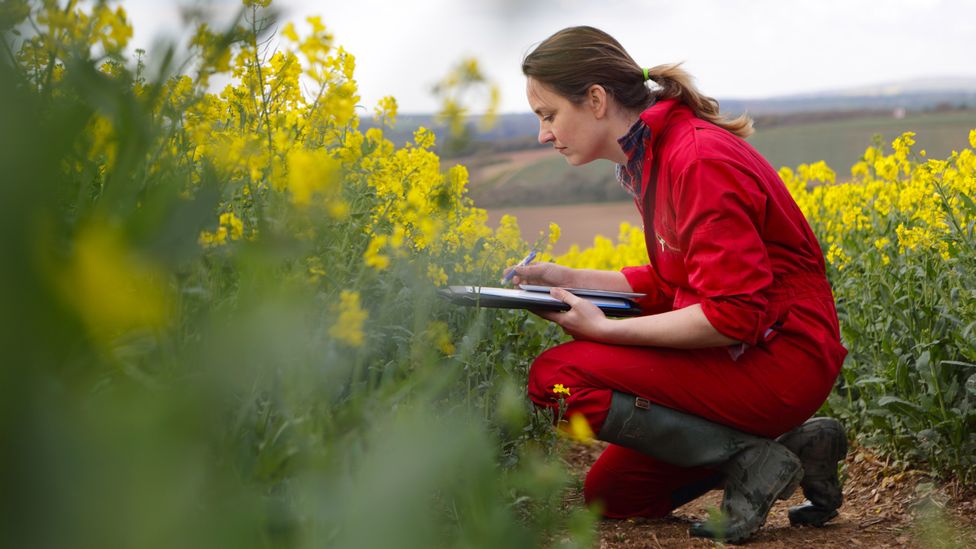
No comments:
Post a Comment